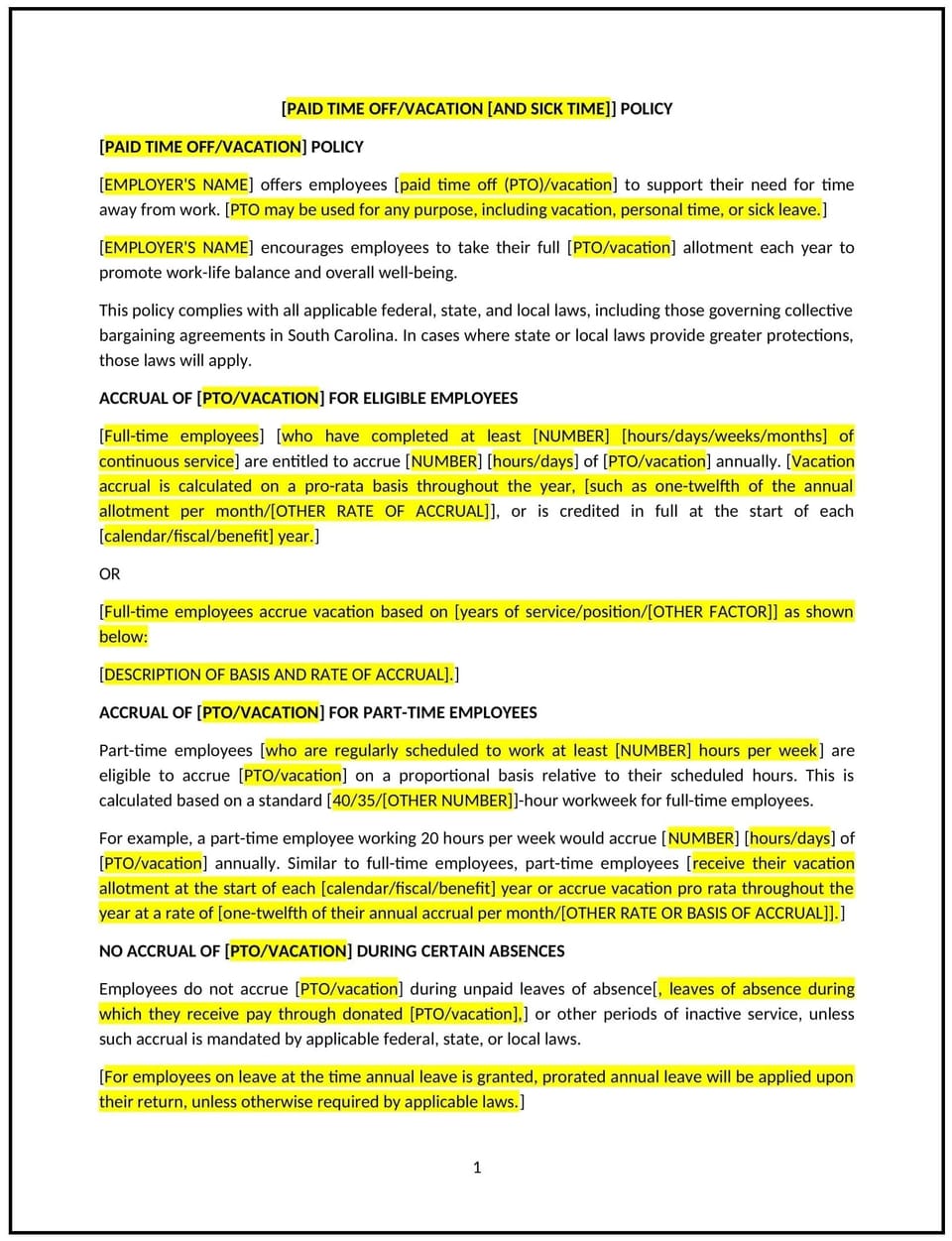Vacation policy (South Carolina): Free template

Vacation policy (South Carolina)
This vacation policy is designed to help South Carolina businesses establish guidelines for employees taking time off for vacation. It outlines procedures for requesting leave, accruing vacation time, and ensuring fair and consistent vacation allocation.
By adopting this policy, businesses can promote work-life balance, enhance employee satisfaction, and align with general best practices for leave management.
How to use this vacation policy (South Carolina)
- Define vacation leave: Explain what constitutes vacation leave and its purpose, such as rest and relaxation.
- Establish accrual rates: Specify how vacation time is accrued, such as hours worked or years of service.
- Set request procedures: Provide steps for employees to request vacation leave, including required notice and approval processes.
- Address carryover: Clarify whether unused vacation time can be carried over to the next year or forfeited.
- Train managers: Educate supervisors on handling vacation requests and maintaining workflow during employee absences.
- Review and update: Assess the policy annually to ensure it aligns with evolving business needs and employee expectations.
Benefits of using this vacation policy (South Carolina)
This policy offers several advantages for South Carolina businesses:
- Promotes work-life balance: Encourages employees to take time off to recharge and maintain well-being.
- Enhances employee satisfaction: Provides employees with paid time off, boosting morale and retention.
- Aligns with best practices: Offers a structured approach to managing vacation leave.
- Reduces burnout: Helps employees avoid overwork and maintain productivity.
- Builds trust: Demonstrates a commitment to employee well-being and work-life balance.
Tips for using this vacation policy (South Carolina)
- Communicate the policy: Share the policy with employees and include it in the employee handbook.
- Provide training: Educate managers on handling vacation requests and maintaining workflow during employee absences.
- Monitor adherence: Regularly review vacation requests to ensure they are addressed promptly and fairly.
- Address issues promptly: Take corrective action if vacation requests are mishandled or denied improperly.
- Update regularly: Assess the policy annually to ensure it aligns with evolving business needs and employee expectations.
Q: How does this policy benefit businesses?
A: This policy promotes work-life balance, enhances employee satisfaction, and aligns with best practices by providing clear guidelines for vacation leave.
Q: How is vacation time typically accrued?
A: Vacation time is often accrued based on hours worked or years of service, with rates increasing over time.
Q: Can unused vacation time be carried over to the next year?
A: This depends on the business’s policy. Some businesses allow carryover, while others require employees to use vacation time within the year.
Q: What should businesses do if an employee’s vacation request conflicts with business needs?
A: Businesses should work with the employee to find a mutually agreeable solution or reschedule the vacation if possible.
Q: How often should businesses review this policy?
A: Businesses should review the policy annually or as needed to ensure it aligns with evolving business needs and employee expectations.
This article contains general legal information and does not contain legal advice. Cobrief is not a law firm or a substitute for an attorney or law firm. The law is complex and changes often. For legal advice, please ask a lawyer.


